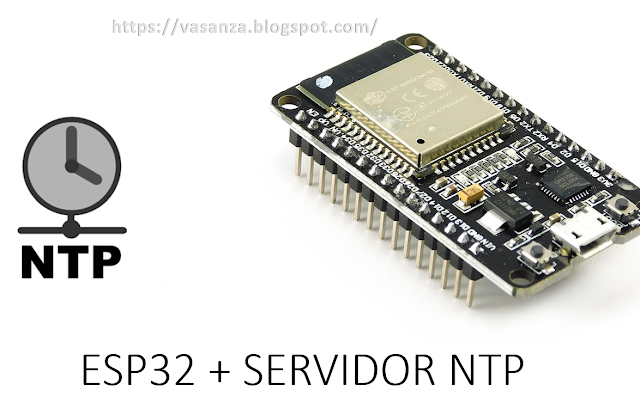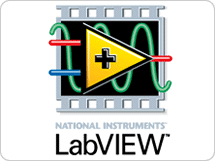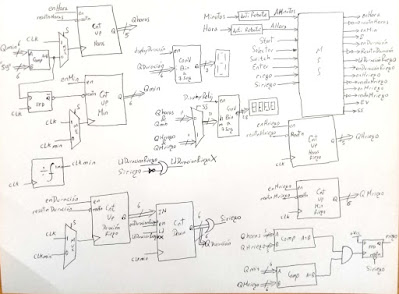▷ IoT-Based Shrimp Pool Optimization with LoRa Technology
⭐⭐⭐⭐IoT-Based Shrimp Pool Optimization with LoRa Technology
- ➡️ #ControlSystem #MonitoringSystem #ShrimpPools #IoT #LoRa #FuzzyLogic #FuzzyLogicControl #Matlab #ESP32 #ESP32lora
- ➡️ #IJACSA: International Journal of Advanced Computer Science and Applications
- ✅ Some of the functionalities used in MATLAB and Lora Devices are found in the repository: https://github.com/josep5097/LoRa-Shrimp-Monitoring-Control
- ⭐ When using this resource, please cite the original publication:
- ✅ Abstract:
- The shrimp farming industry in Ecuador, renowned for its shrimp breeding and exportation, faces challenges due to diseases related to variations in abiotic factors during the maturation stage. This is partly attributed to the traditional methods employed in shrimp farms. Consequently, a prototype has been developed for monitoring and controlling abiotic factors using IoT technology. The proposed system consists of three nodes communicating through the LoRa interface. For control purposes, a fuzzy logic system has been implemented that evaluates temperature and dissolved oxygen abiotic factors to determine the state of the aerator, updating the information in the ThingSpeak application. A detailed analysis of equipment energy consumption and the maximum communication range for message transmission and reception was conducted. Subsequently, the monitoring and control system underwent comprehensive testing, including communication with the visualization platform. The results demonstrated significant improvements in system performance. By modifying parameters in the microcontroller, a 2.55-fold increase in battery durability was achieved. The implemented fuzzy logic system enabled effective on/off control of the aerators, showing a corrective trend in response to variations in the analyzed abiotic parameters. The robustness of the LoRa communication interface was evident in urban environments, achieving a distance of up to 1 km without line of sight.
✅ Introduction:
- Shrimp farming is a crucial industry in Ecuador, contributing significantly to the country's economy. However, it faces challenges related to diseases that can be influenced by variations in abiotic factors during the shrimp maturation stage. To address these challenges, we have developed an innovative IoT-based control and monitoring system using LoRa technology.
✅ The IoT Control and Monitoring System:
- System Architecture:
- Our system comprises three nodes, each equipped with sensors to measure essential abiotic parameters: temperature and dissolved oxygen. These nodes communicate through the LoRa (Long Range) interface, providing a cost-effective and efficient solution for data transmission in remote shrimp pools.
- Fuzzy Logic Control:
- One of the key features of our system is the implementation of a fuzzy logic control system. This control system evaluates temperature and dissolved oxygen levels to determine the optimal state of the aerator. By continuously analyzing these parameters, the system can make real-time decisions about turning the aerator on or off to maintain optimal conditions for shrimp growth.
- Energy Efficiency
- We conducted a detailed analysis of equipment energy consumption to ensure the system operates efficiently. By optimizing parameters in the microcontroller, we achieved a remarkable 2.55-fold increase in battery durability, reducing the need for frequent battery replacements and maintenance.
- Communication Range
- Testing our LoRa-based communication system demonstrated impressive results. The system successfully transmitted and received messages over distances of up to 1 kilometer in urban environments, even without a direct line of sight. This robust communication capability ensures reliable data transfer even in challenging conditions.
✅ Testing and Results:
- Comprehensive testing of our monitoring and control system revealed significant improvements in performance. The fuzzy logic control system effectively managed the aerators, maintaining stable abiotic conditions. This resulted in a corrective trend in response to variations in temperature and dissolved oxygen, ultimately contributing to healthier shrimp growth.
✅ Conclusion:
- Our IoT-based control and monitoring system, powered by LoRa technology and fuzzy logic control, offers a promising solution to enhance shrimp farming practices in Ecuador. By optimizing abiotic conditions and improving energy efficiency, we aim to mitigate disease-related challenges and increase overall productivity in the shrimp farming industry.
- For more detailed information and technical specifications, please refer to the full research paper or contact our team for inquiries.
- Stay tuned for more updates and advancements in IoT technology for agriculture!
✅ References:
- Instituto Nacional de Pesca (INP), Estadísticas Acuícolas de Ecuador: Informe Anual 2020, Quito, Ecuador, 2021.
- CEDIA, “Innovando el sector productivo,” vol. 6, 2021.
- S. D. Rana, and S. Rani, “Fuzzy logic based control system for fresh water aquaculture: A MATLAB based simulation approach,” Serbian journal of electrical engineering, vol. 12, no 2, pp. 171-182, 2015.
- K. Yue, and Y. Shen, “An overview of disruptive technologies for aquaculture,” Aquaculture and Fisheries, vol. 7, no. 2, pp. 111-120, 2022.
- H. C. Li, K. W. Yu, C. H. Lien, C. Lin, C. R. Yu, and S. Vaidyanathan, “Improving Aquaculture Water Quality Using Dual-Input Fuzzy Logic Control for Ammonia Nitrogen Management,” Journal of Marine Science and Engineering, vol. 11, no. 6, 1109, 2023.
- K. L. Tsai, L. W. Chen, L. J. Yang, H. J. Shiu, and H. W. Chen, “IoT based smart aquaculture system with automatic aerating and water quality monitoring,” Journal of Internet Technology, vol. 23, no. 1, pp. 177-184, 2022.
- M. Li, C. Lin, J. Ren, and F. Jiang, F, “A wireless ecological aquaculture water quality monitoring system based on LoRa technology,” 2019 International Conference on Wireless Communication, Network and Multimedia Engineering (WCNME 2019), pp. 5-7, Atlantis Press, 2019.
- H. Bates, M. Pierce, and A. Benter, “Real-time environmental monitoring for aquaculture using a LoRaWAN-based IoT sensor network,” Sensors, vol. 21, no. 23, 7963, 2021.
- S. -T. Chen, S. -S. Lin, C. -W. Lan and T. -I. Chou, "Design and development of a LoRa based Water Quality Monitoring System," 2021 International Symposium on Intelligent Signal Processing and Communication Systems (ISPACS), Hualien City, Taiwan, 2021, pp. 1-2.
- J. Pereira, M. Mora, and W. Agila, “Qualitative Model to Maximize Shrimp Growth at Low Cost." 2021 IEEE Fifth Ecuador Technical Chapters Meeting (ETCM). IEEE, pp. 1-7, 2021.
- N. Peña-Navarro, and A. Varela-Mejías, A, “Prevalencia de las principales enfermedades infecciosas en el camarón blanco Penaeus vannamei cultivado en el Golfo de Nicoya, Costa Rica,” Revista de biología marina y oceanografía, vol. 51, no. 3, pp. 553-564, 2016.
- J. J. Carbajal-Hernández, L. P. Sánchez-Fernández, J. A. Carrasco-Ochoa, and J. F. Martínez-Trinidad, “Immediate water quality assessment in shrimp culture using fuzzy inference systems,” Expert Syst. Appl., vol. 39, no. 12, pp. 10571–10582, 2012.
- J. J. Carbajal-Hernández, L. P. Sánchez-Fernández, L. A. Villa-Vargas, J. A. Carrasco-Ochoa, and J. F. Martínez-Trinidad, “Water quality assessment in shrimp culture using an analytical hierarchical process,” Ecol. Indic., vol. 29, pp. 148–158, 2013.
- N. C. Ferreira, C. Bonetti, and W. Q. Seiffert, “Hydrological and Water Quality Indices as management tools in marine shrimp culture,” Aquaculture, vol. 318, no. 3–4, pp. 425–433, 2011.
- M. Salah Uddin, M. Fatin Istiaq, M. Rasadin, and M. Ruhel Talukder, “Freshwater shrimp farm monitoring system for Bangladesh based on internet of things,” Eng. Reports, vol. 2, no. 7, pp. 1–14, 2020.
- C. E. Boyd, “Water quality in warmwater fish pond,” Agric. Exp., p. 359, 1990.
- B. H. Lam, H. X. Huynh, M. Traoré, P. Y. Lucas, and B. Pottier, “Monitoring environmental factors in mekong delta of vietnam using wireless sensor network approach,” 8th Int. Conf. Simul. Model. Food Bio-Industry 2014, FOODSIM 2014, no. June, pp. 71–78, 2014.
- N. C. Ferreira, “Aplicação de Índices de Qualidade de Água (IQA) como apoio à carcinicultura marinha,” Ufsc, p. 62, 2009.
- R. E. Yambay-Rueda and E. M. Alvarez-Alvarado, “Cultivo intensivo de camarón blanco litopenaeus vannamei en sistemas cerrados de recirculacion.,” Universidad de Guayaquil, 2017.
- M. G. Frías-Espericueta, M. Aguilar-Juárez, I. Osuna-López, S. Abad-Rosales, G. Izaguirre-Fierro, and D. Voltolina, “Los metales y la camaronicultura en México,” Hidrobiologica, vol. 21, no. 3, pp. 217–228, 2011.
- K. Agustianto, T. Kustiari, P. Destarianto, and I. G. Wiryawan, “Development of realtime surface modeling vehicle for shrimp ponds (ReSMeV-SP),” IOP Conf. Ser. Earth Environ. Sci., vol. 672, no. 1, 2021.
- R. A. Bórquez-Lopez, R. Casillas-Hernandez, J. A. Lopez-Elias, R. H. Barraza-Guardado, and L. R. Martinez-Cordova, “Improving feeding strategies for shrimp farming using fuzzy logic, based on water quality parameters,” Aquac. Eng., vol. 81, no. May, pp. 38–45, 2018.
- J. B. Darodes de Tailly, J. Keitel, M. A. G. Owen, J. M. Alcaraz-Calero, M. E. Alexander, and K. A. Sloman, “Monitoring methods of feeding behaviour to answer key questions in penaeid shrimp feeding,” Rev. Aquac., vol. 13, no. 4, pp. 1828–1843, 2021.
- C. Encinas, E. Ruiz, J. Cortez, and A. Espinoza, “ Design and implementation of a distributed IoT system for the monitoring of water quality in aquaculture,” In 2017 Wireless telecommunications symposium (WTS), pp. 1-7, IEEE, 2017.
- B. S. Chaudhari, M. Zennaro, and S. Borkar, “LPWAN technologies: Emerging application characteristics, requirements, and design considerations,” Futur. Internet, vol. 12, no. 3, 2020.
- T. G. Durand, L. Visagie, and M. J. Booysen, “Evaluation of next-generation low-power communication technology to replace GSM in IoT-applications,” IET Commun., vol. 13, no. 16, pp. 2533–2540, 2019.
- LoRa Alliance, “LoRa and LoRaWAN: Technical overview | DEVELOPER PORTAL.” https://lora-developers.semtech.com/documentation/tech-papers-and-guides/lora-and-lorawan/ (accessed Jun. 12, 2022).
- Sigfox, “Technology | Sigfox.” https://www.sigfox.com/en/what-sigfox/technology#id_security (accessed Feb. 12, 2022).
- S. Farahani, “ZigBee/IEEE 802.15.4 Networking Examples,” ZigBee Wirel. Networks Transceivers, pp. 25–32, 2008.
- NXP, “Maximizing security in zigbee networks,” 2017, [Online]. Available: https://www.nxp.com/docs/en/supporting-information/MAXSECZBNETART.pdf.
- E. Aras, G. S. Ramachandran, P. Lawrence, and D. Hughes, “Exploring the security vulnerabilities of LoRa,” 2017 3rd IEEE Int. Conf. Cybern. CYBCONF 2017 - Proc., no. June, 2017.
Read related topics
- ✅ 2023 Paper: Device Free Indoor Localization in the 28 GHz band based on machine learning
- ✅2022 Paper: Learning-based Energy Consumption Prediction
- ✅2022 Paper: #Trilateration-based Indoor Location using Supervised Learning Algorithms
- ✅2021 Paper: #RaspberryPi-based #IoT for #shrimp farms Real-time remote monitoring with automated system
- ✅ 2021 Paper: Monitoring a turkey hatchery based on a #cyber_physical_system
- NEWS
- TALKS
- ✅ Learning-based Energy Consumption Prediction
- ✅ Localización en ambiente de interiores basado en #ML con radio enlaces de 28 GHz
- EMBEDDED SYSTEM
- ✅2021 Paper: Performance Comparison of Database Server based on #SoC #FPGA and #ARM Processor
- ✅2021 Paper: #FPGA Based Meteorological Monitoring Station
- ✅2020 Paper: Monitoring of system memory usage embedded in #FPGA
- ➡️ #FPGA projects for Engineering Students
- Sensor networks for #Agriculture (Paper)
- #PID control for DC motor
- #PID control for angular position
- Writing letters through eye movement using Machine Learning #ML
- EyeTracker #Classification of subjects with Parkinson's using Machine Learning #ML
- #EEG + #FlexSensor Medical Equipments - #HTMC
- Digital synthesizer
- Microcontroller Architecture #PIC #16F877A
- Behavioral signal processing with Machine Learning #ML (Paper)
- Phrases recognition with Machine Learning #ML (InnovateFPGA)
- Alphabet letters recognition with #MachineLearning using #EMG signals (Paper)
- #EMG signal #Classification with #MachineLearning (Paper)
- #Epileptic seizure prediction with #MachineLearning #ML
- #EEG signal processing with #MachineLearning #ML (Paper)
- #EEG + #EMG signal processing with #MachineLearning #ML














This is an awesome detailed blog. Keep it up and visit us Seasonal Wholesale Products in Red Deer for gather more details.
ResponderBorrar